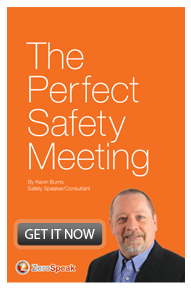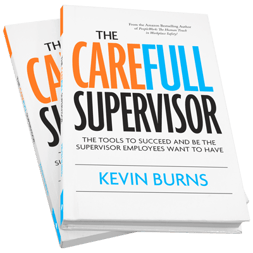Here are the five most important things you need to know about being effective in your safety position.

The term safety manager refers to anyone responsible for providing direction in safety. If they are managing or supervising or overseeing the safety program in any way, they are safety managers. I am not referring to your title.
This is for safety supervisors, officers, advisers, managers, leaders, team-leads, directors, VPs, foremen, safety administrators, and anyone else with “safety” in their title. Do not dismiss the importance of this post just because your actual title isn’t included.
Here are the five most important things you need to know about being effective in your safety position:
1Staff don’t work for you - you work for them. A baseball manager is not responsible for hitting the ball, fielding the ball or running the bases. The players do that. The manager’s job is to put his players in a position to win. That’s the same job of anyone in safety: put your players in a position to win. Give them the instruction they need. Give them skills development, focus, inspiration and the motivation to want to excel. Don’t give them just enough to avoid getting injured and to pencil-whip the paperwork. Think of your position as a coach - a good one, not one of the losing ones. Don’t know much about coaching? See the next point.
2You are responsible for being more than just competent. Competence is the level you are trained to. Excellence is a personal choice beyond that. You may or may not be certified in safety. Big deal either way. It means nothing if you haven’t got the skills to share what you know. Framed certificates hang on the walls of worksites around the world that state someone passed a course. But without the skills to communicate effectively to your crew, you may as well have not bothered to take the course. Just because you pass a course doesn’t guarantee you the skills to communicate what you learned. You have to get better at communication skills. You need to read the books and attend the skills development on your own. It’s your career isn’t it? Then own it.
3Coach them like a championship team. You can impart only enough to make sure your crew meets minimum code in safety. Or you can exceed the bare minimum with your crew. You can build a solid team of outstanding players who will surprise everyone. Or you can finish near the middle of the pack like everyone expects you to. There’s a big difference in the mindset of the team doing just enough to avoid a loss and the team that seizes every opportunity to win. Picture your safety manual as the team playbook. Think of your toolbox meetings as the 30-second timeout with less than a minute to play. Focus your attention on successfully running your play today and getting your win (zero) at the end of today’s game.
4Nobody cares about your title. Your title doesn’t get you respect. The person holding the title gets the respect - or not. It depends on who you are, how you communicate, how you treat your crew, and how you inspire them. And how you recognize their strengths and achievements matters too. You don’t get respect because you passed your certification. You don’t get respect because of the position you hold. You don’t get respect because your title is fancy. You get respect because you make people feel like they matter. You get respect because you give respect. You get respect because you earn it and because people would miss you if you were gone. Until you care about them, they won’t care about you, the job or your title.
5People will engage in safety when you engage them. And not one minute before. Face it, your safety meetings suck. Most do. You’re out of ideas. You blame your crew for not jumping onboard the safety program. But you offer them no way to engage. Safety meetings are meetings - not lectures. So meet. Discuss. Share. Ask. Involve. Inspire. Motivate. Engage. Don’t use your safety meetings just to talk about paperwork and inspections. Ask your people to get involved. Give them pen and paper to write things down. Then during the meeting, say “write this down.” Watch them write it down. Then follow up and ask for their ideas. Are your young workers getting hurt more often? Ask your young workers how to fix it. Don’t just scold them. Involve them. Engage.

If you want to be better at safety, you probably don’t need to review more safety rules. You need to improve your communication and coaching skills. You need to change your mindset - something that will shift their attitudes. Don’t miss on any of these.
Kevin Burns is a management consultant, safety speaker and author of "The Perfect Safety Meeting." He delivers engaging and entertaining keynote safety presentations for everyone: from front-line staff to senior management. He helps people see the light when it comes to buying-in to the safety program.


